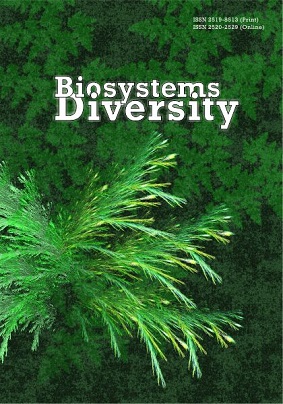Repellent and fumigant toxic potential of three essential oils against Ephestia kuehniella
Repellent and fumigant toxic potential of three essential oils against Ephestia kuehniella
Author(s): H. Bouzeraa, M. Bessila-Bouzeraa, N. LabedSubject(s): Agriculture, Energy and Environmental Studies, Human Ecology
Published by: Дніпропетровський національний університет імені Олеся Гончара
Keywords: Stored grains; flour moth; Artemisia herba alba; Ruta montana; Origanum vulgare; insecticidal properties;
Summary/Abstract: Essential oils, when used as bio-insecticides in the control of insect pests of stored grains have shown specificity and variation in the potentiality of their mode of action. In the present study, three essential oils extracted from three aromatic plants of different families, white wormwood (Artemisia herba alba, Asteraceae), oregano (Origanum vulgare, Lamiaceae) and rue (Ruta montana, Rutaceae), were evaluated for their repellent and fumigant toxic potential against the flour moth larvae, Ephestia kuehniella (Lepidoptera, Pyralidae), under laboratory conditions. The essential oils extraction was done by the hydrodistillation method. The repellent activity was carried out in Petri dishes using a filter paper treated with different oil dilutions (25, 75, 100, 120, 130, 150 µL/mL). The fumigant toxicity was determined on three concentrations (50, 130, 150 µL/L air). Two plants were shown to be repellent against the E. kuehniella larvae. Origanum oil was the most repellent with 67% of repellency rate followed by Artemisia oil (46%) at 120µL/mL after 2 hours of exposure. The oil of R. montana had an attractant activity against the larvae and was the most toxic with 56.7% of larval mortality in the first 24 hours. Themedian lethal concentrations (LC50) recorded were 11.6, 175.4 and 1100.0 µL/L air for the plant oils R. montana, O. vulgare and A. herba alba, respectively. R. montana and O. vulgare essential oil are shown to be efficient with high toxic and repellent properties against E. kuehniella larvae. Their specific potential could be integrated in the selection of the best bioinsecticides for the optimum protection of stored grain.
Journal: Biosystems Diversity
- Issue Year: 27/2019
- Issue No: 4
- Page Range: 349-353
- Page Count: 5
- Language: English

